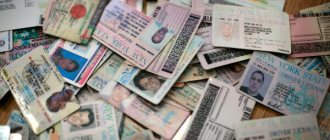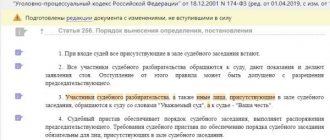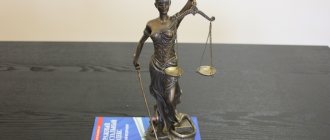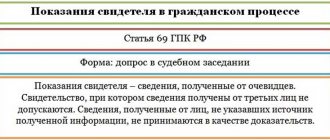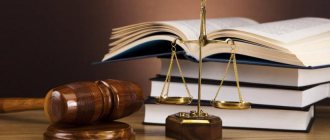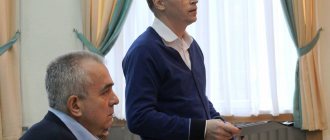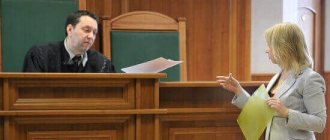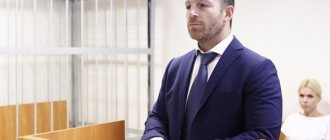Types of falsified evidence in a civil case
In civil cases, there are two types of falsification of documents:
- The first type is changing some data.
This type includes forgery of signatures and seals. This type also requires additional printing of some paragraphs or changing the meaning of the text. For example, when providing a certificate from the hospital, it contained incorrect information about the disease. Or, during testimony, the witness specifically changed some data so that the defendant avoids punishment. - The second type is distortion of all data.
This includes substitution of part or all of the evidence. For example, an attacker can write the text of documents with evidence on his own, inventing data or taking information from unverified sources in order to protect the criminal from punishment. This type of falsification also involves planting completely new evidence at the crime scene, which includes biomaterial, a weapon, and traces of shoes or a vehicle.
All these actions slow down the judicial process. Attention shifts from the main criminal to finding the right information.
If falsification is established, the evidence loses its force, which entails:
- resuming the collection of new evidence;
- making a decision based on the evidence that already exists, without searching for new ones.
Marks made without malicious intent or through carelessness are not falsification of evidence.
Forgery and falsification of evidence are the same thing
Forgery - fake, falsification, counterfeit. When something is distorted and presented as real.
They always falsify with intent - they understand what they are doing
In meaning, “falsified” is the same as “falsified”, no difference, synonyms.
“Forged, falsified” and “unreliable” are not the same thing. What is false is not always unreliable. What is unreliable is not always false.
Only written or material evidence, audio and video recordings, and expert opinions can be forged (falsified).
Explanations by parties and third parties cannot be such. Testimony of witnesses too, the term “knowingly false” is applicable to them.
How is falsification detected and proven?
Everyone involved in the investigation of a crime must verify the authenticity of the evidence and the accuracy of the information entered in the documents. The specialist should pay special attention to the following points:
- Inconsistency of information.
This is clarified by interviewing witnesses and further comparing the information received with that which was previously included in the documents. - Clear signs of falsification.
They can be noticed, for example, in a passport in the form of abrasions on the date or place of registration. Or in a document where a worn or leaking seal is found, as well as obvious signs of reprinting of the text. - Forgery of handwriting.
If a specialist has questions on this issue, he should conduct a comparative analysis of the handwriting of the signature from the received document with other examples.
A person participating in the investigation, in case of doubt, may resort to the services of an expert group to obtain complete information about the evidence. For example, specialists will help you compare handwriting, since without their knowledge and equipment it will be difficult in some cases.
How to exclude evidence and win a case (a story about an exposed deception)
A year after the divorce from Elena, Andrei filed a lawsuit for the division of jointly acquired property - a car worth 1 million rubles.
The vehicles are indivisible, so the plaintiff asked for the division to be made as follows:
He should be allocated a car, and Elena should be awarded compensation in the amount of half the cost of the car - 500 thousand rubles
At the same time, Andrei asked to divide the spouses’ common debt - 600 thousand rubles, which he borrowed from a friend Artyom a year before the end of the marriage.
In fact, Andrey did not take any money from Artyom
He simply agreed with him that the court would award Artyom the amount of the “debt”, Artyom would assign the debt to Andrey and he would offset his debt to Elena for half of the car.
Elena denied the fact of the loan and said that she knew nothing about the debt, her husband did not bring money to the family, and did not spend it on general needs.
Elena’s lawyer prepared a statement about the falsity of the receipt presented by Andrey, indicating that:
The receipt is made on fresh paper and looks as if it was written just yesterday
The court doubted the authenticity of the receipt and, to verify the application, ordered a forensic technical examination to determine how long ago the document was produced.
Based on the results of its conduct, the expert stated in his conclusion that:
The time the document was produced does not correspond to the date stamped on it. The document was produced within a period of time not exceeding 9 months from the date of examination
It turned out that Artyom wrote the receipt after Elena and Andrey’s divorce. And this can no longer be the common duty of the spouses.
Trusting the expert findings, the judge excluded the receipt from evidence in the case and did not take it into account when making a decision.
Based on the results of the trial, the court allocated a car to Andrey and collected 500 thousand rubles from him in favor of Elena, BUT REFUSED TO DIVIDE THE TOTAL DEBT, WHICH DIDN’T EXIST
Responsibility and punishment for falsifying evidence
After a thorough investigation (if facts of falsification of evidence have been established), an investigation follows to establish the criminal person and motives.
When studying the legal side of the issue, keep in mind that the motive of the act does not matter. It also does not matter whether the judge accepted the forged documents or ignored them. The main thing remains the fact of falsification.
Often, document forgery is carried out by persons who have unlimited access to them. They are the ones who know all the ways to falsify information in order to achieve the desired result. Such actions can be provoked by various motives, among which are often:
- big bribes;
- the defendant’s desire to divert suspicion to another person;
- deliberately delaying the proceedings.
A person or group of persons involved in tampering with evidence is subject to one of the following penalties:
- Fine.
Often, for falsifying evidence, especially if the actions of the criminal were aimed at a citizen not involved in the crime, a penalty will be applied in the form of an administrative fine from 100,000 to 300,000 rubles. The amount of payments is calculated for each person individually, based on his earnings over a couple of years. - Forced labor.
A person accused of tampering with evidence may be sentenced to mandatory community service, the duration of which is 480 hours. - Detention.
Usually the accused is imprisoned for three years. However, at the discretion of the judge, the period can be extended to five years.
If imprisonment is imposed on a civil servant, then in addition to the term he is deprived of his position and prohibited from further practicing.
The terms are the same as for imprisonment - from three to five years. Punishment for falsification of evidence is not provided for those persons who provided incorrect data, but knew nothing about the forgery and considered the document to be genuine.
Punishments for falsification are prescribed in the “Criminal Code of the Russian Federation” in Article 303, part No. 1.
Two forms of verification: examination and comparison of evidence
There are two ways to check evidence for fraud.
First form of verification: forensic examination
It is possible to check the validity of a statement of forgery - to determine whether the evidence is really falsified - through a forensic examination.
Ordering an expert examination is the right, not the obligation of the court
Second form of verification: comparison with other evidence
The court will not order an examination if the evidence can be verified by comparison with other evidence.
The court may also invite participants to provide other evidence of their case on this issue.
The court chooses a simpler path: if it is possible without an examination, then why carry it out?
If the totality of evidence does not allow one to draw an unambiguous conclusion about falsification or its absence, then they resort to the help of experts.
Allegation of falsification of evidence
If evidence has been tampered with, file a statement. There are two ways to submit this document:
- Submitting an application during the process.
A person can submit such a document in a courtroom. It is drawn up in writing before the hearing (however, the court also allows an oral statement). The document must indicate that the applicant requires the involvement of an expert group to investigate the falsification. Remember that such services are paid, that is, the applicant himself pays for the work of the experts. If falsification of evidence is established, the money can be returned. It is also worth remembering that the statement must be included in the protocol. - File a complaint with the police.
The paper is taken to the station, which is located in the area where the court hearing the case is located. This method can be used only if the court has not found falsification, and the applicant is firmly convinced of the opposite.
Who can apply and when?
Any person participating in the trial who suspects falsification can submit an application.
As mentioned above, a crime can be reported at a hearing. If the falsification is discovered after the judge’s decision in the case under consideration, the application can be sent to the court. But proving a fake is problematic. It is better to submit a petition as early as possible in order to quickly convict the criminal and not delay the process.
How to make an application correctly?
Take your application seriously and include all the necessary information to avoid denial of consideration. The paper is filled out as follows:
- The first stage is to create the “header” of the document.
As a standard, information is written in the upper right corner. The first line indicates the institution where the application is sent (court or police station). Next, on the second line, standard information about the applicant is entered: last name, first name, patronymic and place of residence. The third line indicates the number of the case under consideration, in which forgery is suspected, and the full names of the defendant and plaintiff. - Stage two – description of the facts of the crime.
Next, briefly but succinctly state the facts of the offense, namely write what evidence is falsified. It is better to refer to the legislative framework regarding false evidence. - Stage three – conclusion.
It contains a request for the recognition and exclusion of falsified evidence. - Stage four – applications.
This includes a list of documentation attached to the application, if any. - Stage five – signature and date.
At the end of the form, the date of compilation of the paper and the signature of the applicant are indicated.
If the application is sent to the court, two copies will be required. The first copy is sent to the judge. As for the second copy, the court office stamps it and returns it to the applicant.
sample application for falsification of evidence in .doc format (Word)
Procedure for consideration of the application
Within ten days after filing the application, the court appoints an examination. It can be either handwriting or forensic technical. The choice depends on the type of forgery. If the crime was discovered and confirmed, then the falsified evidence will be removed from the case.
Actions of the court after the application
The Civil Procedure Code is again more meager in regulating the actions of a judge upon receipt of an application for falsification than the APC.
In civil proceedings, the court may (but is not required to) order an expert examination to verify the statement OR invite the parties to provide other evidence.
That's all
The APC clearly defines the actions of the judge and their sequence:
- The court is obliged to explain the criminal legal consequences of a statement of falsification
- If the person who presented the disputed evidence agrees to exclude it from the list of evidence, the court excludes
Consent is expressed orally or in writing. If in writing, submit an application called:
“Statement of consent to exclude the disputed evidence from the evidence in the case”
- If the person objects to the exclusion, the court must examine the validity of the allegation of falsification.
- The court verifies the authenticity of the application - orders an examination, requests other evidence, takes other measures
When to report falsification of evidence
The answer is simply simple: always, even when the disputed evidence does not affect the final result.
In any case, you will show the dishonesty of your opponent, and you will form a distrustful attitude towards him in the judge
If the examination does not confirm the fears, this may cause negativity on the part of the court, since the consideration of the case will be delayed.
However, there is no need to be afraid of this. It’s just that at some point your interests coincided with the interests of the court. They just checked the evidence for falsification. And what is your fault then?
It's better to do it and regret it than to regret not doing it
The opponent presented fake evidence to the court: how to defend your interests?
An application for falsification of evidence must be submitted to the court of first instance in writing and justify why the evidence is a forgery. The court has no right to leave such an application without consideration. If you fail to convince the court that you are right, you can contact law enforcement agencies. The court's verdict in a criminal case will be the basis for reviewing the decision in a civil case.
Says:
Yulia Sheyanova,
Lawyer at Exiora Law Firm
“Falsification of evidence” means that the person involved in the case or his representative tried to distort the actual content of the evidence presented in civil, arbitration or criminal proceedings (Resolution of the Federal Antimonopoly Service of the North-Western District dated 07/09/2010 in case No. A56-69989/2009).
Falsification can be:
- production of a fake document in its entirety,
- entering deliberately false data into a document,
- forgery of the signature of the person certifying the document,
- counterfeiting of seals and stamps,
- mechanical removal of part of the text,
- removing text with chemical reagents and various solvents,
- introducing new words, phrases or individual characters into the document,
- pasting individual sheets, replacing them,
- photo pasting,
- aging of the document, etc.
If you are sure that the evidence presented in the case is falsified, you need to file an application for falsification of evidence.
Allegation of falsification of evidence
The main purpose of a statement of falsification of evidence is to exclude a forged document or other falsified evidence from the case file.
An application for falsification must be submitted in writing (Article 161 of the Arbitration Procedure Code of the Russian Federation). The court will not consider an oral statement (Resolution 15AAC dated March 21, 2021 in case No. A53-25471/2020).
If falsified evidence in the case materials became known already during the trial, the falsification of evidence can be reported orally. The court must reflect this statement in the protocol and explain to the person participating in the case who made an oral statement the right to submit a written statement (clause 36 of the Information Letter of the Presidium of the Supreme Arbitration Court of the Russian Federation dated August 13, 2004 No. 82). But then the application still needs to be submitted in writing.
It is important to file a statement of falsification when considering a case in the first instance . This requirement follows from Art. 268 of the Arbitration Procedure Code of the Russian Federation, according to which an appeal can consider evidence only if the applicant did not have the opportunity to present it to the court of first instance. The applicant will have to prove objective reasons why he was unable to file an application for falsification during the first consideration of the case (Determination of the Supreme Court of the Russian Federation of October 26, 2017 No. 309-ES17-9988 in case No. A07-2906/2016).
On a note
In some cases, a statement of falsification can be submitted not only to the court of first instance:
- if the appeal proceeds to consideration under the rules of the first instance, persons participating in the case have the right to make statements of falsification;
- If the appeal accepts new evidence, which was not in the case when considered in the court of first instance, then the persons participating in the case have the right to make a statement of falsification in relation to such evidence.
The statement must justify why you believe that the disputed evidence is falsified . If the formal requirements are met, the court cannot leave the application for falsification of evidence without consideration (Resolution of the Moscow District Court of August 15, 2016 in case No. A40-68558/15). However, the court may reject the application if it does not contain a justification for why the applicant considers the evidence to be fake (Part 1 of Article 159 and Article 161 of the Arbitration Procedure Code of the Russian Federation, Resolution of the Arbitration Court of the North-Western District of October 17, 2016 in case No. A56-12918/2014 , Resolution of the Administrative Court of the East Siberian District dated 07/09/2015 in case No. A19-9085/2014). As justification, you can point out, for example, contradictory data in copies of the same document presented by the applicant and his opponents, attach handwriting samples, and present your expert opinion.
Please note: a statement of falsification can significantly delay the dispute resolution process. The court will postpone the trial to verify its validity (Part 5 of Article 158 of the Arbitration Procedure Code of the Russian Federation).
Procedure of the court
Having received an application for falsification of evidence, the court:
- explains the criminal legal consequences - Art. 303 of the Criminal Code of the Russian Federation (liability for falsification of evidence) and Art. 306 of the Criminal Code of the Russian Federation (liability for knowingly false denunciation),
- excludes the disputed evidence from evidence in the case if the person presenting it agrees with this, or
- checks the validity of the statement about falsification of evidence if the person who presented this evidence objects to its exclusion from the list of evidence in the case (Article 161 of the Arbitration Procedure Code of the Russian Federation).
CASE STUDY
In the bankruptcy case of a citizen, a company in which this citizen was the general director and the only participant tried to be included in the register with its claims against the citizen.
Another creditor tried to counter this, believing that the agreement between the debtor and his company was falsified and aimed solely at creating artificial debt. This creditor outlined its arguments about the falsification of the agreement in its response to the company's application for inclusion in the register. Moreover, according to the audio transcript of the court session, after a break, the creditor’s representative, when asked by the trial court about whether the persons participating in the separate dispute had any petitions, explained that he had a petition to falsify the agreement. However, the court did not consider this petition, justifying its decision by the fact that a break in the court session was announced to issue a judicial act on the merits of the dispute. At the same time, before the break, the court of first instance did not announce the completion of the stage of examining the evidence.
The courts of three instances rejected the creditor's arguments, finding that he:
- did not file an application for falsification of the agreement in accordance with Art. 161 Arbitration Procedure Code of the Russian Federation,
- did not apply for the appointment of an examination of the prescription of the production of documents.
The Supreme Court of the Russian Federation did not agree with this decision and noted that:
- the court violated the requirements of the Arbitration Procedure Code of the Russian Federation by not accepting the creditor’s petition for falsification of the agreement for consideration,
- the court could not leave without consideration the application for falsification of the agreement due to the fact that the creditor did not apply for a forensic examination.
The dispute was returned for reconsideration to the court of first instance.
Ruling of the Supreme Court of the Russian Federation dated November 16, 2017 No. 307-ES17-1676 in case No. A56-71402/2015
To verify the validity of an allegation of falsification of evidence, the court may:
- appoint an examination.
The applicant may request an examination along with a statement of falsification. However, the court is not obliged to grant this request - this is its right, not its obligation. He may limit himself to the analysis of other arguments and evidence (clause 36 of the Information Letter of the Presidium of the Supreme Arbitration Court of the Russian Federation dated 08/13/2004 No. 82, Resolution of the Moscow District Arbitration Court dated 01/24/2020 in case No. A40-219648/2018);
- request other evidence.
Ordering an examination is not the only way that allows the court to verify the validity of an application for falsification of evidence. The court can evaluate the disputed evidence in conjunction with other evidence in the case by comparing it and identifying logical relationships: primary documents, testimony of witnesses, correspondence of the parties, draft documents, etc. (Resolution of the Court of Justice of the West Siberian District dated March 10, 2020 in case No. A45- 28521/2018, Decision of the Court of Justice of the Irkutsk Region dated 12/09/2019 in case No. A19-4859/2019);
- take other measures.
For example, in one case, the courts came to the conclusion that there were no facts confirming the falsification of the tax audit report, having interviewed the head of the tax inspectorate and the inspector (Determination of the Supreme Court of the Russian Federation of May 28, 2018 No. 302-KG18-5558 in case No. A19-17107/2016).
Contacting law enforcement agencies
If you are sure that the evidence is falsified, but you were unable to convince the court hearing the case of this, you can go another way - contact the Investigative Committee with a statement about the signs of a crime under Part 1 of Art. 303 of the Criminal Code of the Russian Federation, on the fact of falsification of evidence.
In this case, the consideration of the civil case is suspended until the consideration of the criminal case on the fact of falsification (clause 1, part 1, article 143 of the Arbitration Procedure Code of the Russian Federation, Resolution of the Central District Court of July 23, 2015 in case No. A64-2955/13).
If the court in a criminal case confirms that the evidence is falsified, this will have prejudicial significance for a civil case, the materials of which contain controversial evidence. A verdict in a criminal case on falsification of evidence is the basis for reviewing judicial acts in the corresponding civil case based on newly discovered circumstances (clause 4.1 of the Resolution of the Constitutional Court of the Russian Federation of December 21, 2011 No. 30-P).
On a note
For falsification of evidence, confirmed by a court verdict, the convicted person faces a fine of 100 thousand to 300 thousand rubles or in the amount of salary or other income for a period of 1 to 2 years, or compulsory work for a period of up to 480 hours, or corrective labor for a period up to 2 years, or arrest for up to 4 months (Part 1 of Article 303 of the Criminal Code of the Russian Federation, Appeal Resolution of the Moscow City Court dated 07/09/2020 in case No. 10-10962/2020).
Articles on the topic
How to recover damages? Current positions of judicial practice that will help in court
04.06.2021
2127
Treaties
Despite the fact that the reform of the Civil Code of the Russian Federation has lowered the standard of proof in disputes regarding the recovery of losses, in practice, proving all of them...
More details
“Balance of probabilities” versus “clear and convincing evidence”: what are the standards of proof? Interview with Roman Bevzenko
18.04.2021
8152
Process
It will be more difficult for a party to a contract to prove the validity of its claims in court if the other party is bankrupt. It will be even more difficult if...
More details
The plaintiff does not know the defendant’s address: what to include in the statement of claim?
13.01.2021
9016
Process
The information contained in the Unified State Register of Real Estate does not always contain passport data and information about the registration address of property owners. How on…
More details
If the court suspects forgery of documents in a civil case, it can itself transfer the information to the investigation
16.07.2020
1496
Process
In a new review of judicial practice, the RF Supreme Court made 10 non-obvious conclusions about the powers of the courts. Thus, the courts can, on their own initiative...
More details
Tags: Arbitration Procedure Code of the Russian Federationevidenceprocedurecriminal casefalsificationpetitionshortread
